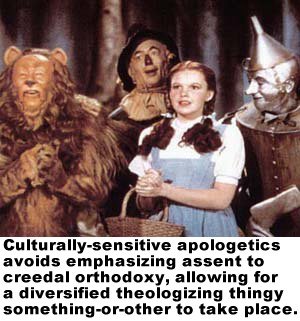This year I resolve to find something crucial to evangelicalism, re-define what it should mean, and then write a book about it that will hack a lot of people off, but also get me invited to speak at conferences and such.
I resolve to season my writing with self-deprecating remarks transparently designed to disarm critics while emboldening sycophants.
In my writing I resolve to make a lot of outrageous-sounding statements calculated to make certain people’s blood boil, and then make them read a ways further or examine the footnotes to find all my disclaimers and qualifications.To make myself feel better about the previous resolution, I’ll rhetorically shrug that—hey!—even I find some of the stuff I write a bit offensive, so how can I blame anyone who stops reading?
I resolve to compare opponents who keep reading beyond my warnings to some sort of nasty insect. (How about hornets? ... Seriously—I’m not bitter. Really!)
I resolve to brush with broad strokes, and when somebody points out that I painted over the truth, I’ll just say, “Oops!” and refer them back to my disclaimers.I resolve to build an army of straw men and then defeat them in a monumental battle between sloppy caricatures and gross over-simplifications.
I resolve to reduce some major doctrine to its biblical metaphor, and then exchange that metaphor for one more to my liking the way people get rid of eyeglass frames that are no longer in style.
I resolve to completely dismantle the central tenets of someone else’s orthodoxy and call it a “slight revision.”
I resolve to de-emphasize the personal, individualistic aspect of salvation. It would probably help if I simultaneously de-emphasize the doctrine of hell.
I resolve to bring together mutually-contradictory positions by using the slash key (“/”) on my keyboard, and before anyone has a chance to point out that they’re utterly irreconcilable I’ll start talking about “moving beyond” both options to “a generous third way.”I resolve to generously sprinkle positive-sounding words and phrases like “generous,” “enriched,” and “less rigid” into descriptions of my opinions, while spiking contrary views with words like “defensive,” “preoccupied,” and “nauseating.”
I resolve to be more like my friend, Chester.
I resolve to be more embarrassed by traditional evangelicalism than I have been in the past.
But knowing me, by mid-February I’ll have blown every one of them. (Sigh!)I resolve to forget or distort a lot of recent church history in order to fulfill the previous resolution.
I resolve to watch more “Christian” television so I know what I’m supposed to be embarrassed about, and then go around suggesting to evangelicals that that’s what they actually look like.I resolve to be generous with my orthodoxy, but never to the point of giving it away in the form of a tract, because then someone might confuse being missional with making absolute truth claims.











